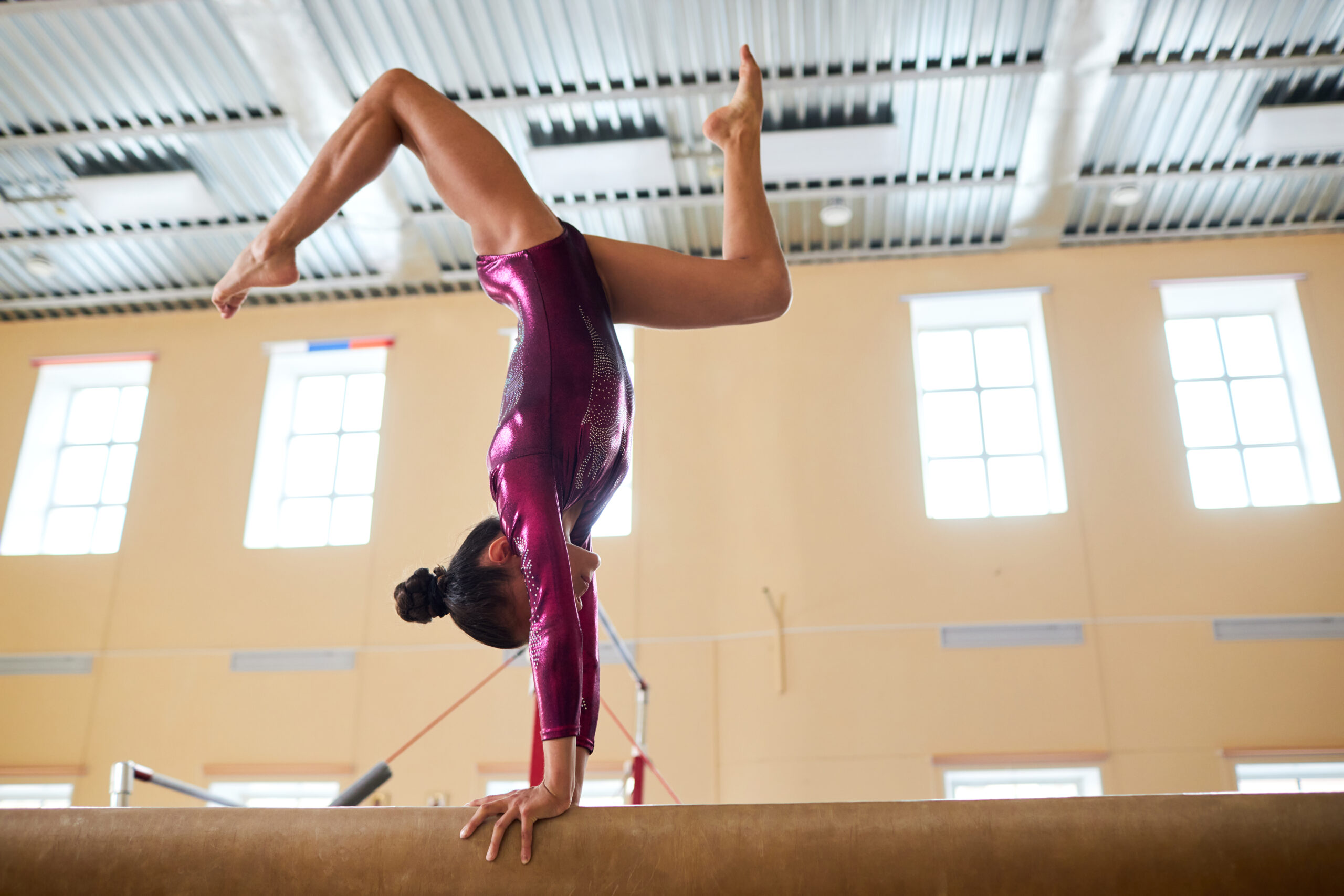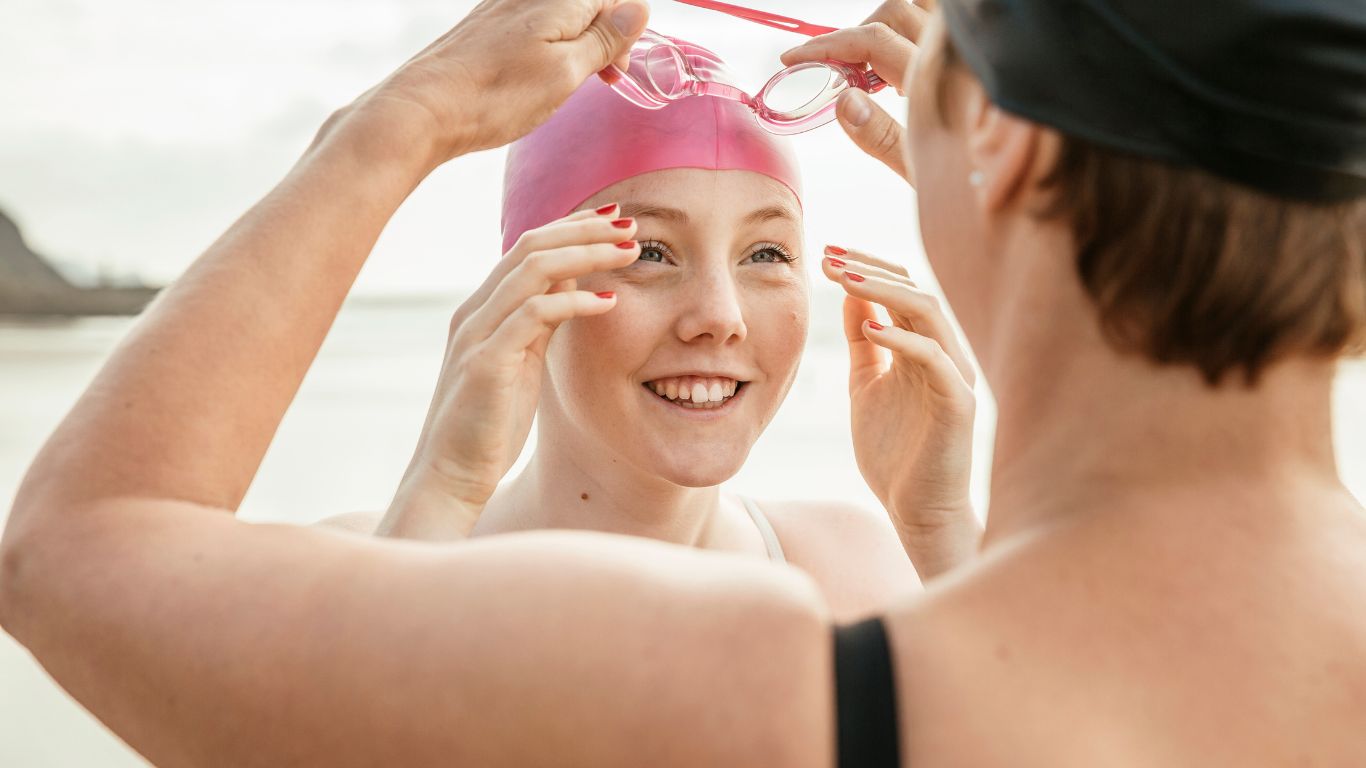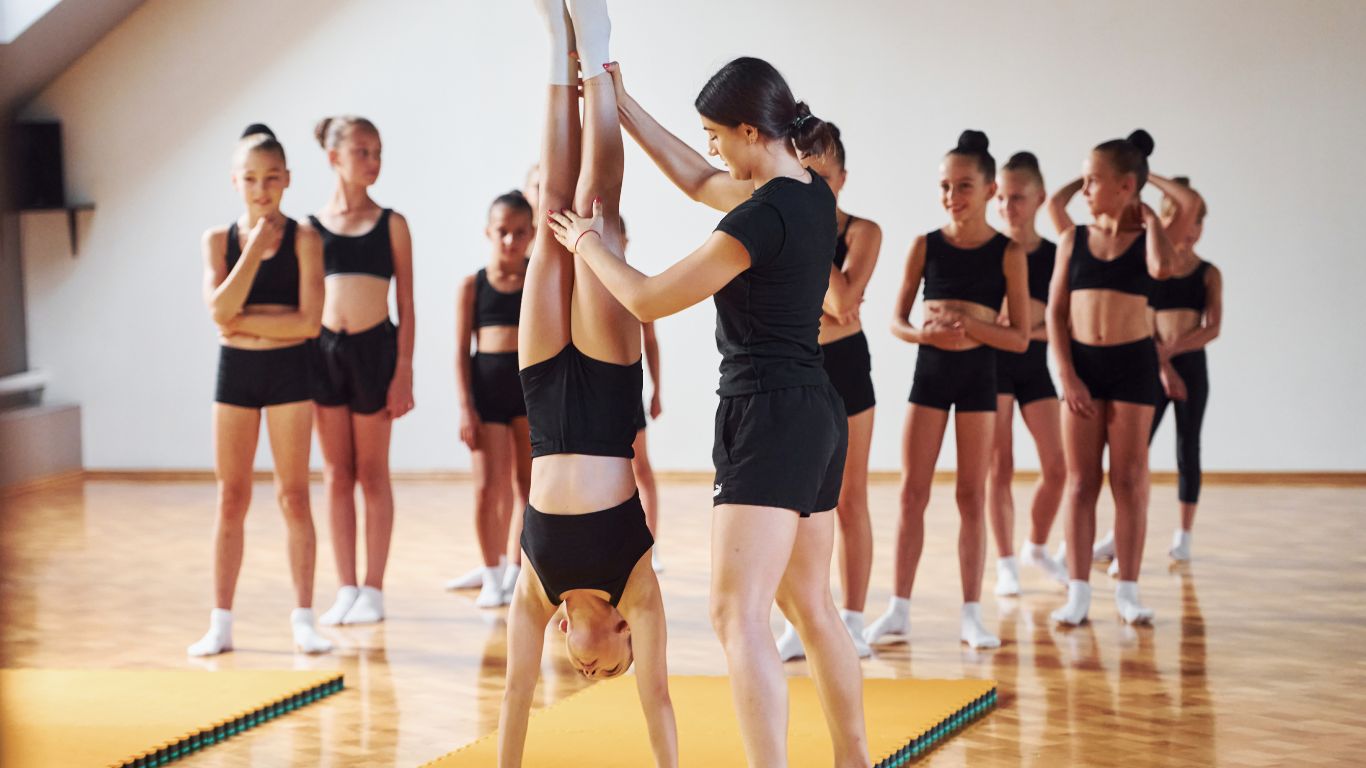Gymnastics is a popular sport for children and teens, but there is a common misconception that it can stunt growth. However, there is no scientific evidence to support this claim. Gymnastics has many benefits for growing bodies, such as improving flexibility, strength, and coordination. Focusing on proper training and nutrition to support healthy growth while participating in gymnastics is important.

Step 1: There is a common misconception that gymnastics can stunt growth, but no scientific evidence supports this claim.
Step 2: In fact, gymnastics promotes healthy growth and development by improving strength, flexibility, and coordination.
Step 3: Maintaining a balanced diet and proper nutrition to support growth while participating in gymnastics or any physical activity is important.
Step 4: Overall, gymnastics can benefit physical health and does not stunt growth when practiced in a healthy and balanced manner.
The Myth of Stunted Growth in Gymnastics
Gymnastics has long been associated with the myth that it stunts growth, particularly in young children. However, this belief is not supported by scientific evidence. Participating in gymnastics can have numerous physical and mental benefits for individuals of all ages. In this blog post, we will debunk the myth of stunted growth in gymnastics and explore the positive impact that this sport can have on overall development.

Step 1: Understand the myth: The myth of stunted growth in gymnastics suggests that intense training at a young age can hinder a child’s growth and development. This myth has been debunked by scientific research, which shows that gymnastics training does not hurt a child’s growth.
Step 2: Focus on proper training and nutrition: Gymnasts need proper training and nutrition to support their physical development. This includes strength training, flexibility exercises, and a balanced diet to ensure that they grow and develop healthily.
Step 3: Support mental and emotional well-being: In addition to physical growth, it’s important to support gymnasts’ mental and emotional well-being. This means creating a positive and supportive training environment and providing opportunities for rest and recovery to prevent burnout.
Step 4: Encourage a holistic approach to development: Gymnastics can contribute to a child’s overall development by promoting discipline, focus, and perseverance. By taking a holistic approach to training and development, gymnasts can physically and mentally thrive.
The Importance of Proper Nutrition and Training in Gymnastics
Proper nutrition and training are crucial elements in the success of any gymnast. A well-balanced diet and consistent training regimen can significantly affect an athlete’s performance, strength, and endurance. This post will explore the importance of nutrition and training in gymnastics and provide valuable tips and insights to help gymnasts achieve their full potential. Whether you’re a competitive gymnast or enjoy the sport for recreation, understanding the role of nutrition and training is essential for reaching your goals.
Step 1: Proper nutrition is essential for gymnasts to fuel their bodies and provide the energy needed for training and competition. A balanced diet with carbohydrates, protein, healthy fats, and plenty of fruits and vegetables is crucial for optimal performance.
Step 2: Training in gymnastics requires strength, flexibility, and endurance. Proper training techniques and consistent practice are necessary to improve skills and prevent injury. Gymnasts should work with qualified coaches to develop a training program that meets their needs and goals.
Step 3: Recovery is also important in gymnastics. Adequate rest and recovery time allows the body to repair and strengthen muscles, reducing the risk of overuse injuries. Proper nutrition and hydration play a key role in the recovery process.
Step 4: Mental health is another important aspect of gymnastics training. Proper nutrition and training can impact a gymnast’s mental well-being, so it’s important to address any psychological or emotional challenges that may arise. Seeking support from a sports psychologist or mental health professional can benefit gymnasts.
Debunking the Myth with Scientific Evidence
Have you ever heard a myth or urban legend and wondered if there was any truth? This blog post will debunk common myths and urban legends using scientific evidence. From the belief that carrots improve eyesight to the idea that cracking your knuckles causes arthritis, we’ll explore the scientific evidence behind these myths and separate fact from fiction. Get ready to be surprised by the truth behind these popular beliefs.

Step 1: Identify the myth: The first step in debunking a myth with scientific evidence is identifying the myths to debunk. What is the belief or misconception that you want to address?
Step 2: Gather scientific evidence: Research and gather scientific evidence that either supports or refutes the myth. Look for peer-reviewed studies, expert opinions, and empirical data that can help substantiate your argument.
Step 3: Present the evidence: Present the scientific evidence clearly and organized. Use facts, figures, and logical reasoning to make your case and debunk the myth.
Step 4: Address counterarguments: Anticipate and address any potential counterarguments or criticisms of the scientific evidence you presented. Be prepared to defend your position with additional evidence or logical reasoning.
Step 5: Communicate effectively: Communicate your findings and debunking of the myth clearly, concisely, and persuasively. Use language that is accessible to your audience, and be open to engaging in constructive dialogue.
Addressing Common Concerns and Misconceptions
Step 1: Identify the concerns and misconceptions: Take the time to identify the common concerns and misconceptions people have about the topic.
Step 2: Provide accurate information: Research and gather accurate and reliable information to address the concerns and misconceptions. It’s important to provide evidence-based facts and data to support your explanations.
Step 3: Communicate clearly: It’s crucial to communicate clearly and understandably when addressing concerns and misconceptions. Use simple language and avoid jargon to ensure your message is easily understandable.
Step 4: Offer solutions or alternatives: If applicable, offer solutions or alternatives to address the concerns and misconceptions. Providing practical advice or suggestions can help alleviate any apprehensions or misunderstandings.
Encouraging Youth Participation in Gymnastics for Overall Health and Fitness
Encouraging youth participation in gymnastics is crucial for promoting overall health and fitness. Gymnastics builds strength and flexibility and teaches discipline, teamwork, and determination. In this post, we will explore the benefits of youth participation in gymnastics and provide tips for parents and coaches to encourage and support young athletes in this sport.

Step 1: Promote the benefits of gymnastics: Highlight the physical, mental, and emotional benefits of participating in gymnastics, such as improved flexibility, strength, coordination, and discipline.
Step 2: Offer beginner-friendly programs: Create beginner-friendly programs and classes to make gymnastics accessible to youth of all skill levels and abilities.
Step 3: Provide a supportive and inclusive environment: Foster a supportive and inclusive environment where youth feel encouraged and motivated to participate in gymnastics.
Step 4: Partner with schools and community organizations: Collaborate with schools and community organizations to promote gymnastics as a fun and beneficial activity for overall health and fitness.
Step 5: Organize fun events and competitions to showcase youth gymnasts’ skills and talents and inspire others to participate.
Pros and cons of early specialization
Early specialization in sports, such as gymnastics, has been debated for many years. Some argue that starting intense training at a young age can stunt growth and lead to physical and emotional burnout, while others believe that early specialization can lead to success in the sport. In this post, we will explore the pros and cons of early specialization in sports, specifically focusing on whether gymnastics stunts growth. We will examine the potential benefits and drawbacks of starting intense training at a young age and provide insights from experts in the field. By the end of this post, you will better understand the potential impact of early specialization in gymnastics and be able to make an informed decision for yourself or your child.
Some Frequently Asked Questions
1. Does gymnastics stunt your growth?
There is no scientific evidence to support the claim that gymnastics stunts growth. Proper nutrition and rest are important factors in a child’s growth and development, not just the physical activity of gymnastics.
2. At what age is it safe for children to start gymnastics?
Children can start gymnastics as early as 18 months in parent-child classes, but typically, they can start more structured classes around the age of 5 or
3. Can gymnastics cause injuries?
Like any physical activity, gymnastics can come with the risk of injury. Gymnasts need to receive proper training, use appropriate equipment, and have proper supervision to minimize the risk of injury.
4. Will gymnastics make my child more flexible?
Yes, gymnastics can improve flexibility, strength, and coordination in children. It’s a great way for kids to develop these physical skills in a fun and engaging environment.
5. Can boys do gymnastics too?
Absolutely! Gymnastics is not just for girls. There are male-specific gymnastics events and competitions; many boys enjoy and excel in the sport.
6. How often should children practice gymnastics?
The frequency of practice can vary depending on the child’s age, skill level, and goals. Children need to have a balance of gymnastics training and rest to prevent burnout and overuse injuries.
7. Will my child have to compete in gymnastics?
Competing in gymnastics is not mandatory. Many children enjoy gymnastics for the physical activity, skill development, and social aspects without participating in competitive events.
8. Can gymnastics help with my child’s confidence?
Yes, gymnastics can help boost a child’s confidence by teaching them new skills, overcoming challenges, and performing in front of others. This can have a positive impact on their self-esteem and overall confidence.
Conclusion
There is no scientific evidence to suggest that gymnastics stunts growth in children. Regular exercise and physical activity are important for overall health and development. Parents must encourage their children to participate in various physical activities, including gymnastics, to promote healthy growth and development.









